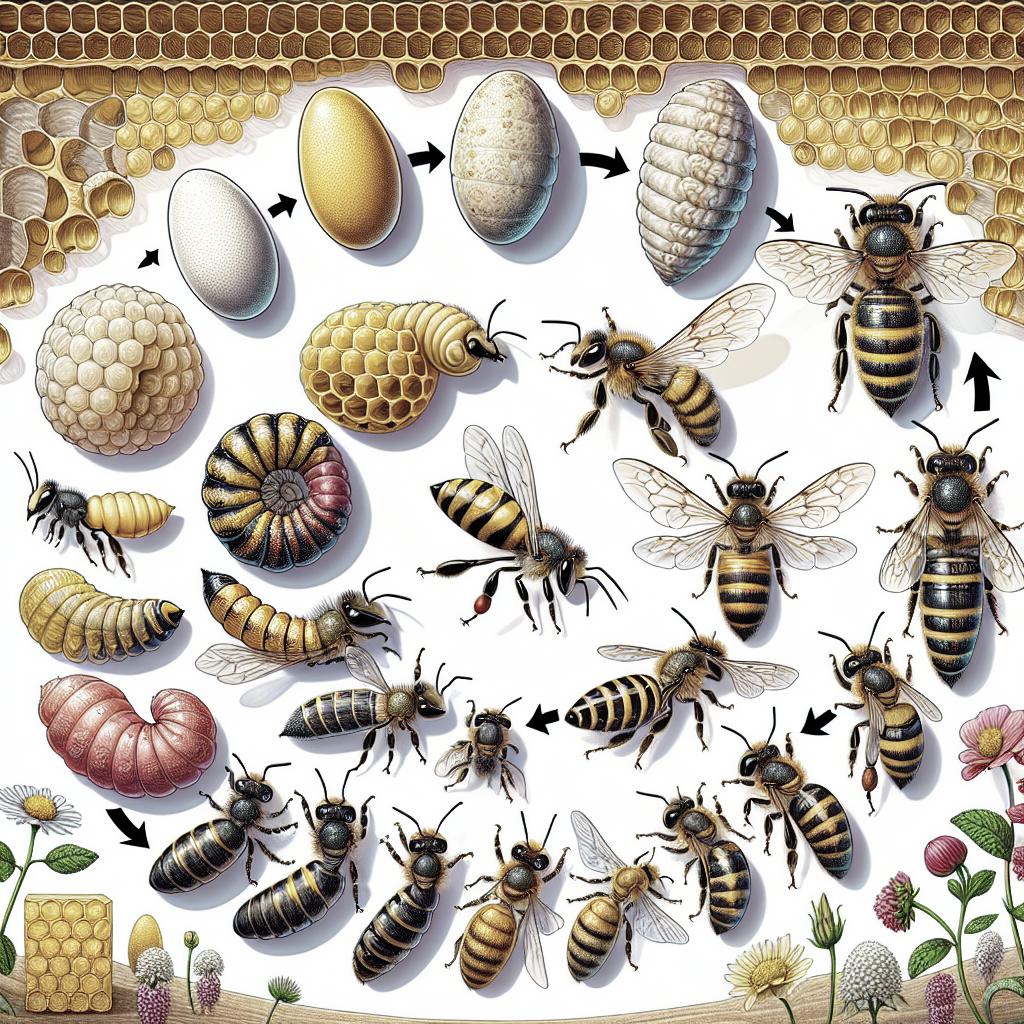The Lifecycle of a Worker Bee
Bees are among the most fascinating creatures in the animal kingdom. This article examines the intricate lifecycle of the worker bee, which plays a crucial role in the survival of a bee colony. We will explore aspects related to the development stages, challenges faced by dying colonies, and measures for bee protection. Through understanding the worker bee’s lifecycle—from its beginning as an egg to its duties within the hive—we can gain insight into the critical part these insects play in our ecosystem. Additionally, we will address human impacts and conservation efforts integral to protecting these vital pollinators.
Related To:
Worker bees are an essential component of a thriving bee colony. Their journey begins in the hive, where the queen lays eggs within hexagonal wax cells. These eggs signify the start of a new generation of bees that will contribute to the hive’s success. Scientifically termed the
Apis mellifera
, worker bees undergo distinct stages of development from egg to adult.
Once the queen deposits an egg in a cell, it takes about three days to hatch into a larva. This larva is nurtured by nurse bees, which provide it with a pollen-rich meal known as “bee bread.” As larvae, worker bees undergo several molts over six days, growing substantially until they reach the next critical phase: pupation. During this stage, larvae spin cocoons and undergo remarkable transformations into adult bees.
The role of the worker bee is diverse and tends to change with age. Initially, they act as nurse bees, caring for the brood as they age. Their responsibilities shift to other tasks such as cleaning the hive, building cells, and guarding the entrance of the colony. Finally, they transition to foragers, leaving the nest to collect nectar and pollen, ensuring the colony’s continued sustenance.
A Dying Colony
Despite their resilience, bees face numerous threats that can severely impact their populations. Environmental issues such as pesticide use and habitat loss have heightened concerns about the stability and continuity of bee colonies. A dying colony often exhibits a significant reduction in the worker bee population, which negatively affects pollination and food resources.
Colony Collapse Disorder (CCD) has emerged as a critical phenomenon, particularly in recent years. This disorder is characterized by the mass disappearance of worker bees, leaving behind the queen, food supply, and a few nurse bees to fend for the brood. Researchers are investigating various factors contributing to CCD, including parasites, diseases, and environmental toxins.
The decline of bee populations poses a serious threat to global agriculture and ecosystems. Bees are indispensable pollinators, and their absence could lead to decreased yields in crops dependent on bee pollination. It is imperative for scientists, policymakers, and individuals to address and mitigate factors contributing to colony declines.
Protecting the Bee
Protecting bees requires collective efforts from various stakeholders. Habitat conservation plays a crucial role in sustaining bee populations. Preserving wildflower meadows and supporting community gardens rich in native plants provide bees with the necessary forage resources.
Reducing pesticide use is another significant step to protect bees. Organic farming techniques, integrated pest management, and the adoption of bee-friendly alternatives help mitigate chemical risks. Additionally, awareness campaigns educate farmers and the public on the benefits of sustainable agricultural practices.
Researchers are continuing to study bee immunity and breeding programs aimed at cultivating resistant bee strains to combat diseases and pests. These programs include selecting for traits such as grooming behavior, which can reduce mite infestations. Collaborative efforts and ongoing research are paving the way for more sustainable solutions in bee conservation.
gby1712_2a_bee-egg-nests.
The lifecycle of a worker bee begins inside the safety of its egg cell, an environment carefully crafted by the worker bees that came before it. These cells form part of a structured network known as a comb, integral to the hive’s architecture. The hive represents an intricate photon of unity and cooperation among its members, and the cycle of life within these nests is a testament to their enduring communal relationship.
Eggs laid by the queen are delicately nestled within these cells, individually inspected and monitored by worker bees. Each tiny egg carries the potential of becoming an industrious worker, fundamentally important to the hive’s thriving state. Understanding their nurturing environment provides insights into the resilient nature of the worker bee.
From the transformative process that takes place within these nests to the maturation of young bees into adult workers, the hive is a delicate balance of life and labor. It underscores not only the bees’ adaptability but also the intrinsic responsibility each bee holds towards its colony.
Future Prospects
| Stage | Duration | Function | Challenges |
|---|---|---|---|
| Egg | 3 days | Initial development | Environmental conditions |
| Larva | 6 days | Growth and molts | Food quality |
| Pupa | 12 days | Transformation | Hive security |
| Adult | 6 weeks | Hive duties | Pesticides, habitat loss |
While understanding the lifecycle of worker bees is fascinating on its own, the future of bee colonies relies heavily on the actions we take today. By prioritizing conservation efforts and considering ecological impacts, we can ensure the sustainability of these incredible pollinators. The vitality of our ecosystems and the security of our food systems depend on the health and prosperity of bee populations worldwide.


